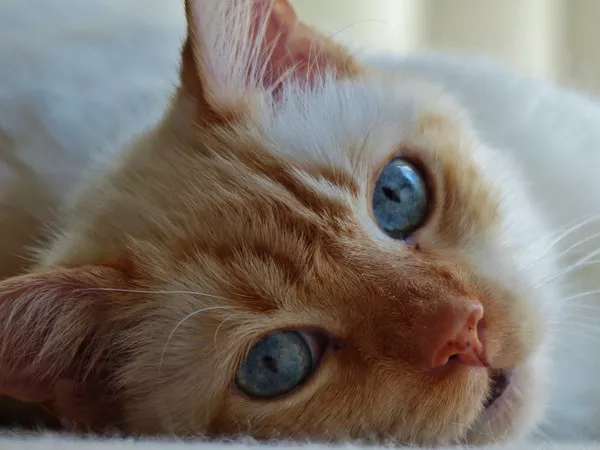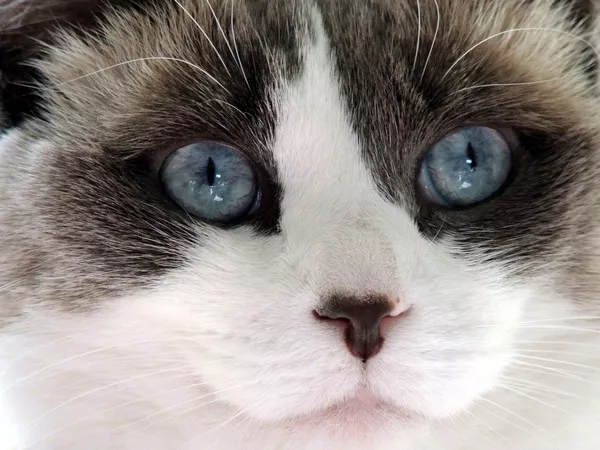Persian cats, known for their luxurious coats and distinctive features, require special attention when it comes to grooming, and their ears are no exception. Due to their unique facial structure and long hair, Persian cats are prone to ear issues such as wax buildup, infections, and ear mites. In this comprehensive guide, we will explore the importance of cleaning Persian cat ears, the common ear problems they may face, and a step-by-step process for safe and effective ear cleaning.
The Importance of Cleaning Persian Cat Ears:
Proper ear care is vital for the overall health and well-being of Persian cats. Their distinctive facial features, including a flat face and large, furry ears, contribute to the susceptibility of ear-related problems. Regular ear cleaning serves several crucial purposes:
Preventing Wax Buildup:
Persian cats are prone to wax buildup in their ears due to their abundant fur and the structure of their ear canals. Regular cleaning helps prevent the accumulation of excess wax, reducing the risk of ear infections.
Avoiding Ear Infections:
Excessive wax or trapped moisture can create an environment conducive to bacterial or fungal growth, leading to ear infections. Routine cleaning is essential for preventing infections and maintaining ear health.
Detecting Ear Mites:
Persian cats may be more susceptible to ear mites, tiny parasites that can cause discomfort and irritation. Regular cleaning allows for the early detection of mites and prompt intervention.
Reducing Odor and Discomfort:
Regular ear cleaning helps reduce unpleasant odors associated with wax buildup. It also prevents discomfort for the cat, ensuring they remain happy and healthy.
Facilitating Veterinary Examinations:
Clean ears facilitate thorough veterinary examinations. Regular cleaning ensures that any potential ear issues are easily visible and can be addressed promptly.
Common Ear Problems in Persian Cats:
Persian cats are predisposed to certain ear problems that owners should be aware of:
Excessive Wax Buildup:
Due to their unique ear structure and abundant fur, Persian cats are prone to accumulating excess earwax. This can lead to blockages and potential complications.
Ear Infections:
Moisture trapped in the ear canal, combined with wax buildup, creates an environment conducive to bacterial or fungal infections. Ear infections can cause discomfort and require veterinary attention.
Ear Mites:
Ear mites are common in Persian cats and can lead to intense itching, head shaking, and discomfort. If left untreated, ear mites can cause secondary infections.
Polyps or Tumors:
While less common, Persian cats may develop ear polyps or tumors. These growths can obstruct the ear canal, leading to issues such as hearing loss or discomfort.
Hematoma:
In some cases, Persian cats may develop ear hematomas, which are collections of blood within the ear flap. Hematomas can result from trauma or excessive scratching due to ear discomfort.
Materials Needed for Persian Cat Ear Cleaning:
Before initiating the ear-cleaning process, gather the necessary materials to ensure a safe and effective experience:
Cat-Safe Ear Cleaner:
Choose a cat-specific ear cleaning solution recommended by veterinarians. Avoid using human ear cleaners, as they may contain ingredients that can be harmful to cats.
Cotton Balls or Pads:
Use soft, lint-free cotton balls or pads for cleaning. Avoid using cotton swabs, as they can push debris further into the ear canal.
Gentle Cat Shampoo (Optional):
In case of wax buildup or stubborn debris, a mild cat shampoo may be used. Ensure it is safe for feline use and recommended by your veterinarian.
Treats or Rewards:
Have some treats or rewards on hand to reward your cat for positive behavior during and after the ear-cleaning process.
Towel or Pet Wipes:
Keep a towel or pet wipes nearby to clean any accidental spills or to wipe your cat’s face after the ear cleaning.
Step-by-Step Guide to Cleaning Persian Cat Ears:
Follow these steps for safe and effective ear cleaning for your Persian cat:
Prepare the Environment:
Choose a quiet and comfortable area for the ear-cleaning process. Ensure all necessary materials are within reach to avoid disruptions.
Wash Your Hands:
Wash your hands thoroughly before handling your cat’s ears to prevent the transfer of dirt or bacteria.
Gentle Petting and Calming:
Spend a few minutes gently petting and calming your cat. This helps create a relaxed atmosphere and prepares your cat for the grooming process.
Offer Treats and Positive Reinforcement:
Present treats or rewards to your cat, associating the ear-cleaning session with positive experiences. This helps build trust and cooperation.
Examine the Ears:
Before starting the cleaning process, visually inspect your cat’s ears. Look for signs of redness, swelling, discharge, or unusual odor. If you notice anything concerning, consult your veterinarian.
Moisten a Cotton Ball with Ear Cleaner:
Moisten a clean, soft cotton ball with the cat-specific ear cleaning solution. Squeeze out excess liquid to avoid dripping.
Hold Your Cat Comfortably:
Hold your cat securely but gently. If needed, enlist the help of a friend or family member to provide additional support. Wrap your cat in a towel if they are particularly resistant.
Gently Wipe the Ear Flap:
With the moistened cotton ball, gently wipe the visible part of the ear flap, removing any debris or wax. Be gentle to avoid causing discomfort.
Avoid Inserting Objects into the Ear Canal:
Never insert cotton swabs or any other objects into the ear canal. This can push debris further inside and potentially damage the delicate structures of the ear.
Use a Different Cotton Ball for Each Ear:
To prevent cross-contamination, use a fresh cotton ball for each ear. This ensures that any potential infection is not spread from one ear to the other.
Optional: Shampoo for Wax Buildup:
If there is stubborn wax buildup, you can use a mild cat shampoo recommended by your veterinarian. Follow the product instructions, ensuring it is safe for feline use. Rinse thoroughly and pat the ear dry.
Reward and Praise:
Once the ear-cleaning process is complete, offer additional treats and praise to reinforce positive behavior. This helps your cat associate the experience with positive outcomes.
Monitor for Discomfort:
After cleaning, observe your cat for any signs of discomfort, redness, or increased head shaking. If you notice any concerning changes, consult your veterinarian.
Regular Veterinary Check-Ups:
Schedule regular veterinary check-ups to monitor your Persian cat’s overall ear health. Your veterinarian can provide guidance on preventive care and address any underlying issues.
Preventive Measures for Persian Cat Ear Health:
In addition to regular ear cleaning, implementing preventive measures contributes to maintaining optimal ear health in Persian cats:
Regular Veterinary Check-Ups:
Schedule routine veterinary check-ups to monitor your cat’s overall health, including ear health. Early detection of issues is key to effective intervention.
Balanced Diet:
Provide a balanced and nutritious diet to support your cat’s overall well-being, including ear health. Consult your veterinarian for dietary recommendations.
Avoid Excessive Moisture:
Persian cats are prone to ear infections, and excessive moisture can contribute to this. Avoid exposing your cat’s ears to prolonged dampness, and dry them gently if they get wet.
Regular Grooming:
Incorporate regular grooming into your cat’s routine, including brushing their coat to prevent excess hair from entering the ear canal.
Monitor for Signs of Discomfort:
Be attentive to signs of discomfort such as head shaking, scratching at the ears, or unusual behavior. Early intervention can prevent the development of more serious issues.
Ear Mite Prevention:
Consult your veterinarian about preventive measures for ear mites, especially if your cat spends time outdoors or interacts with other animals.
Avoid Smoking in the Home:
If you smoke, avoid smoking indoors. Secondhand smoke can irritate your cat’s ears and contribute to ear-related issues.
Common Mistakes to Avoid:
While cleaning your Persian cat’s ears, it’s essential to avoid common mistakes that may lead to discomfort or complications:
Using Harsh Substances:
Avoid using harsh substances such as alcohol, hydrogen peroxide, or human ear cleaners on your cat’s ears. Stick to veterinarian-recommended cat-specific ear cleaning solutions.
Inserting Objects into the Ear Canal:
Never insert cotton swabs, hairpins, or any other objects into your cat’s ear canal. This can cause injury, push debris further inside, and lead to complications.
Neglecting Regular Veterinary Check-Ups:
Regular veterinary check-ups are crucial for monitoring your cat’s overall ear health. Neglecting these check-ups may result in undetected issues.
Ignoring Signs of Discomfort:
If your cat shows signs of discomfort, redness, or increased head shaking, consult your veterinarian promptly. Ignoring these signs may lead to worsening conditions.
Overlooking Environmental Factors:
Consider environmental factors that may contribute to ear issues, such as exposure to allergens or excessive moisture. Addressing these factors supports ear health.
Using Dirty or Abrasive Materials:
Ensure the materials used for ear cleaning are clean, soft, and non-abrasive. Dirty materials may introduce bacteria, and abrasive materials can cause irritation.
Skipping Treats and Positive Reinforcement:
Offering treats and positive reinforcement during and after the ear-cleaning process is crucial. Skipping this step may result in a negative association with grooming.
SEE ALSO: Cleaning Sphynx Cat Ears
Conclusion:
Caring for your Persian cat’s ears is an essential aspect of responsible pet ownership. By understanding the unique needs of these feline companions and incorporating regular ear cleaning into their grooming routine, you contribute to their overall health and well-being. Preventive measures, such as balanced nutrition, regular veterinary check-ups, and environmental considerations, complement the ear-cleaning process. With patience, positive reinforcement, and a commitment to proper ear care, you can ensure that your Persian cat’s ears remain healthy, comfortable, and free from potential issues.



























